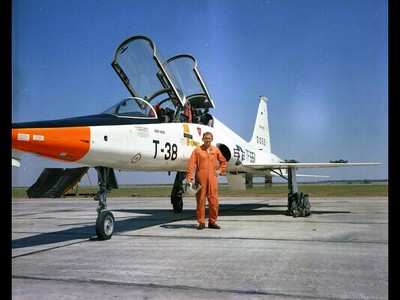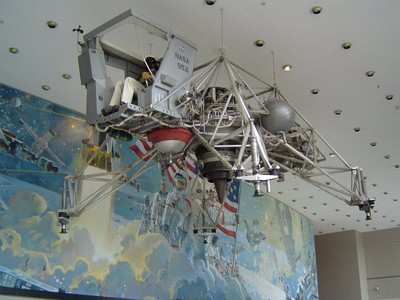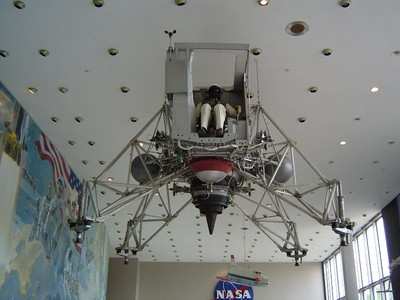Mon, May 04, 2009
Amazing and Gifted Life Shaped Manned Space Flight
A truly amazing player in the oh-so-dramatic earlier years of
space exploration and development has gone west.

Joseph S. Algranti was one of those "been there and done most of
it" flyers who helped build NASA from the launch pad up. Among the
responsibilities he undertook was his ascension to Chief of
Aircraft Operations at the Johnson Space Center during the heady
years of the Apollo Program, even directing the Lunar Lander
Training Vehicle (LLTV) program that was used to build skills and
familiarity with the flying chores that were to eventually land men
on the moon. In the absence of an earth-bound LM, the LLTV was what
used to training future Apollo moon landers. The development of
that vehicle (a succcessor to the LLRV) was not without its hazards
to the point where Algranti was forced to eject from the vehicle
while enagaged in the test program, on 8 December 1968 -- just a
few months after another of his peers had been forced to do so -- a
guy by the name of Neil Armstrong. The man qualified in quite a
number of airframes and based on what we've read, earned an immense
amount of respect from his peers. The one LLTV (of three, preceded
by 2 LLRVs) to survive the test program is on display in the lobby
of Building 2 at NASA's Johnson Space Center.

According to his home obituary, Algranti was born February 8,
1925 in New York, son of the late Samuel Joseph Algranti and
Beatrice Carol Algranti. He graduated from the University of North
Carolina at Chapel Hill with a BS in Physics. He was a pilot in the
US Navy and retired as a Commander in the Naval Reserves. He began
his career as a research test pilot in Cleaveland, OH at NACA. Next
he moved to NASA at Langley, VA. From 1962, he assumed the role of
Chief of Aircraft Operations and Chief Test Pilot at NASA in
Houston, TX, where he was instrumental in the training of all
aspects of the space program. He retired from NASA in 1992, and
after retirement, he moved to Chapel Hill and then to LaGrange.

Fair winds, Sir... and thank you for your service.
More News
Airplane Bounced About 3 Ft Then Touched Back Down And Then, With No Brakes Applied, The Airplane Began Veering To The Left Analysis: The pilot entered the airport traffic pattern >[...]
Aero Linx: British Microlight Aircraft Association (BMAA) The primary focus within all aviation activity is SAFETY. In all aspects of our sport SAFETY must come first, whether it b>[...]
From SnF25 (YouTube Edition): William Wynne Builds Practical Aircraft Engines on the Corvair Platform Seeking an affordable alternative to the traditional aircraft engine options, >[...]
How To Get A Story On Aero-TV News/Feature Programming How do I submit a story idea or lead to Aero-TV? If you would like to submit a story idea or lead, please contact Jim Campbel>[...]
From 2023 (YouTube Edition): Bridge of CiES CiES Inc. is a Bend, Oregon-based designer and manufacturer of modular embedded aircraft systems and sensors. The company’s fuel-l>[...]
 NTSB Final Report: Aviat A1
NTSB Final Report: Aviat A1 ANN's Daily Aero-Linx (07.08.25)
ANN's Daily Aero-Linx (07.08.25) Classic Aero-TV: Fly Corvairs Reliable Engine Alternative
Classic Aero-TV: Fly Corvairs Reliable Engine Alternative ANN FAQ: Contributing To Aero-TV
ANN FAQ: Contributing To Aero-TV Classic Aero-TV: CiES Fuel-Quantity and e-Throttle Systems Praised
Classic Aero-TV: CiES Fuel-Quantity and e-Throttle Systems Praised





